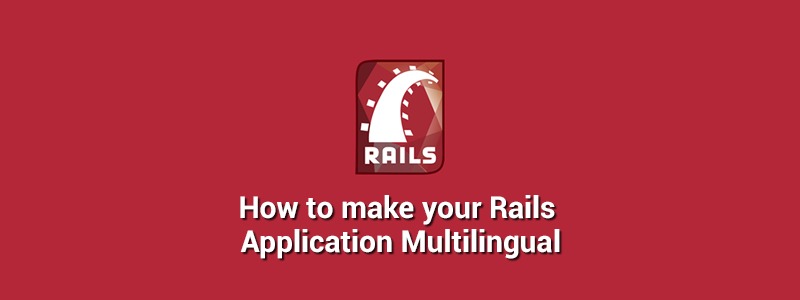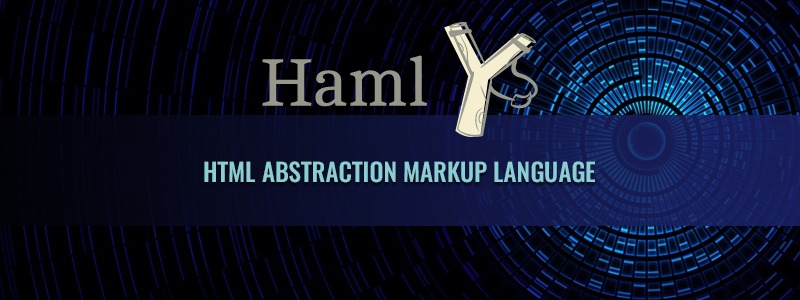Rails gem approach, MySQL approach and a Multilingual Rails structure
Most of the world doesn’t speak English. That’s where internationalization and localization come in. Rails has a great i18n API. Reference: http://guides.rubyonrails.org/i18n.html It provides an easy-to-use and extensible framework for translating your application to a single custom language other than English or for providing multi-language support in our application. I18n API: The most important methods of the I18n API are: translate # Lookup text translations localize # Localize Date and Time objects to local formats These have the aliases #t and #l so you can use them like this:I18n.t 'app.title'
I18n.l Time.nowgem 'rails-i18n', github: 'svenfuchs/rails-i18n', branch: 'master' # For 5.xconfig.i18n.available_locales = ['es-CO', :de]config.i18n.available_locales = :nlgem 'globalize', '~> 5.0.0'
To use globalize with Rails 5 add this in our Gemfile
gem 'activemodel-serializers-xml'Create column approach model with language columns;
`title_en` varchar(255) NOT NULL,
`title_ar` varchar(255) NOT NULL,- Simplicity – easy to implement
- Easy querying – no JOINs required
- No duplicates – doesn’t have duplicate content
- Hard to maintain – works in easy way for 2-3 languages, but it becomes a really hard when you have a lot of columns or a lot of languages
- Hard to add a new language
CREATE TABLE PRODUCT (id int, PRICE NUMBER(18, 2))
CREATE TABLE PRODUCT_tr (id int, product_id INT FK, languagecode varchar, name text, description text)- Doesn’t require altering the database schema for new languages (and thus limiting code changes)
- Doesn’t require a lot of space for unimplemented languages or translations of a particular item Provides the most flexibility
- We don’t end up with sparse tables
- We don’t have to worry about null keys and checking that we’re displaying an existing translation instead of some null entry.
Myapp::Application.routes.draw do
scope "(:locale)", :locale => /en|ar/ do
root :to => 'page#index'
get "page/index"
end
endclass ApplicationController < ActionController::Base
protect_from_forgery
before_filter :set_locale
private
def set_locale
I18n.locale = params[:locale] || I18n.default_locale
end
endhttp://0.0.0.0:3000/arhttp://0.0.0.0:3000/ar/page/indexapp/controllers/application_controller.rb:
class ApplicationController < ActionController::Base
protect_from_forgery
before_filter :set_locale
private
def set_locale
I18n.locale = params[:locale] || I18n.default_locale
Rails.application.routes.default_url_options[:locale]= I18n.locale
end
endapp/controllers/application_controller.rbclass
ApplicationController < ActionController::Base
protect_from_forgery
before_filter :set_locale
private
def extract_locale_from_accept_language_header
request.env['HTTP_ACCEPT_LANGUAGE'].scan(/^[a-z]{2}/).first
end
def set_locale
I18n.locale = extract_locale_from_accept_language_header || I18n.default_locale
end
endconfig/routes.rb:
Myapp::Application.routes.draw do
get "page/index"
root :to => 'page#index'
endapp/controllers/set_mylanguage_controller.rb:
class SetMylanguageController < ApplicationController
#English
def en
I18n.locale = :en
set_session_and_redirect
end
#Arabic
def ar
I18n.locale = :ar
set_session_and_redirect
end
private
def set_session_and_redirect
session[:locale] = I18n.locale
redirect_to :back
rescue ActionController::RedirectBackError
redirect_to :root
end
endapp/controllers/application_controller.rb:
class ApplicationController < ActionController::Base
protect_from_forgery
before_filter :set_locale
private
def set_locale
I18n.locale = session[:locale] || I18n.default_locale
session[:locale] = I18n.locale
end
endhttp://0.0.0.0:3000/set_mylanguage/arhttp://0.0.0.0:3000/set_mylanguage/en$ mkdir -p config/locales/models/item
$ mkdir -p config/locales/views/itemconfig.i18n.load_path += Dir[Rails.root.join('config', 'locales', 'models', '*', '*.yml').to_s]
config.i18n.load_path += Dir[Rails.root.join('config', 'locales', 'views', '*', '*.yml').to_s]
config.i18n.default_locale = :en# ruby encoding: utf-8en:
views:
show: Show
edit: Edit
destroy: Delete
are_you_sure: Are you sure?
back: Back
item:
index:
title: List of all items
new:
title: New Item
flash_messages:
item_was_successfully_created: ‘Item was successfully created.'$ cd config/locales$ curl -O https://raw.github.com/svenfuchs/rails-i18n/master/rails/locale/ar.yml <% = t ‘views.item.index.listing_items’ %>
<% = link_to I18n.t('views.show'),@item %>
<%= Item.human_attribute_name(:name) %><%=Item.human_attribute_name(:description) %> if @item.save
format.html { redirect_to @item, notice:
I18n.t('views.item.flash_messages.item_was_successfully_created') }
format.json { render json: @item, status: :created, location: @item }
else
format.html { render action: "new" }
format.json { render json: @item.errors, status: :unprocessable_entity }
endLUBAIB CEEJEY
Sr. Ruby on Rails Developer
Subscribe For Latest Updates
Related Posts




